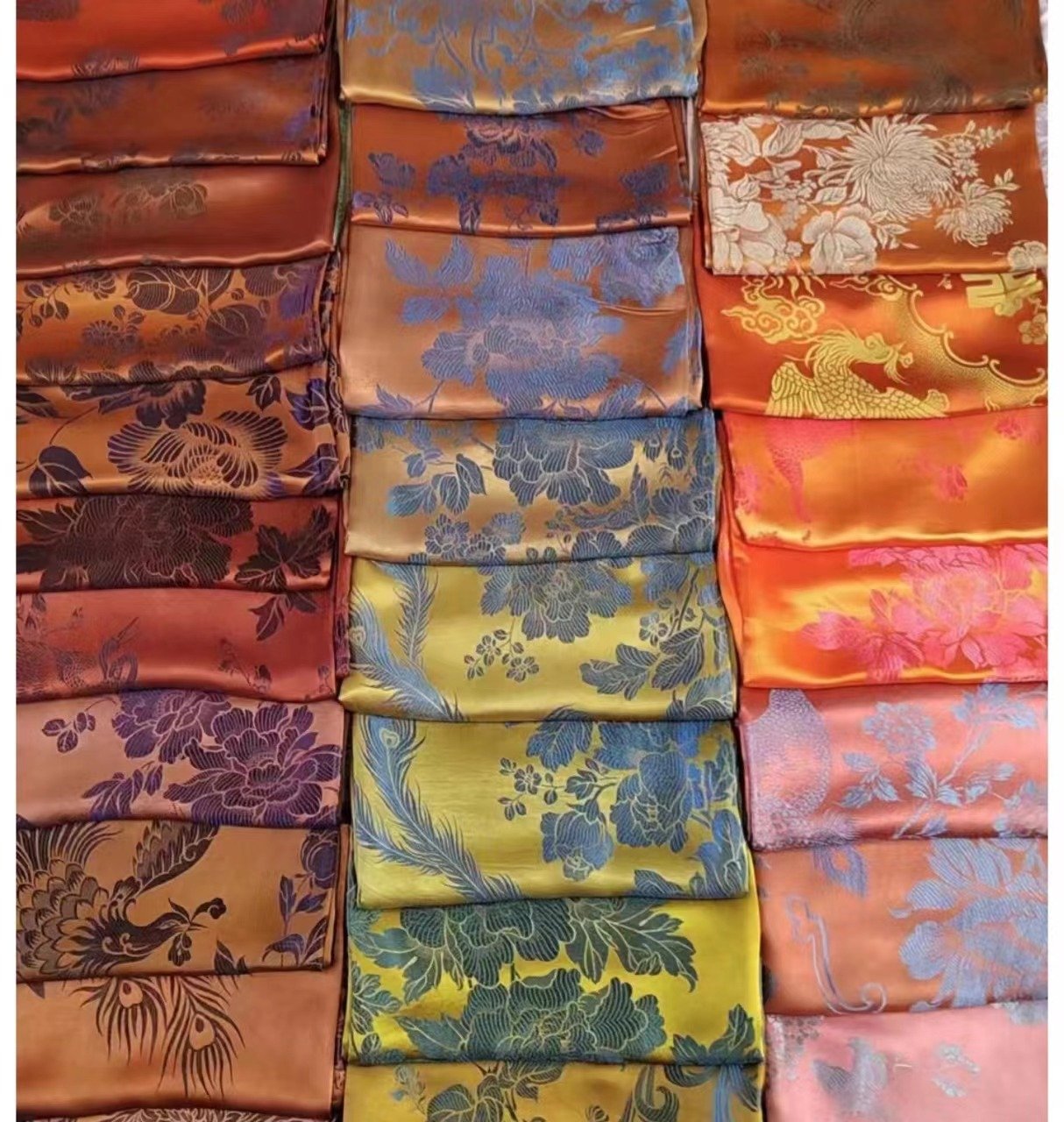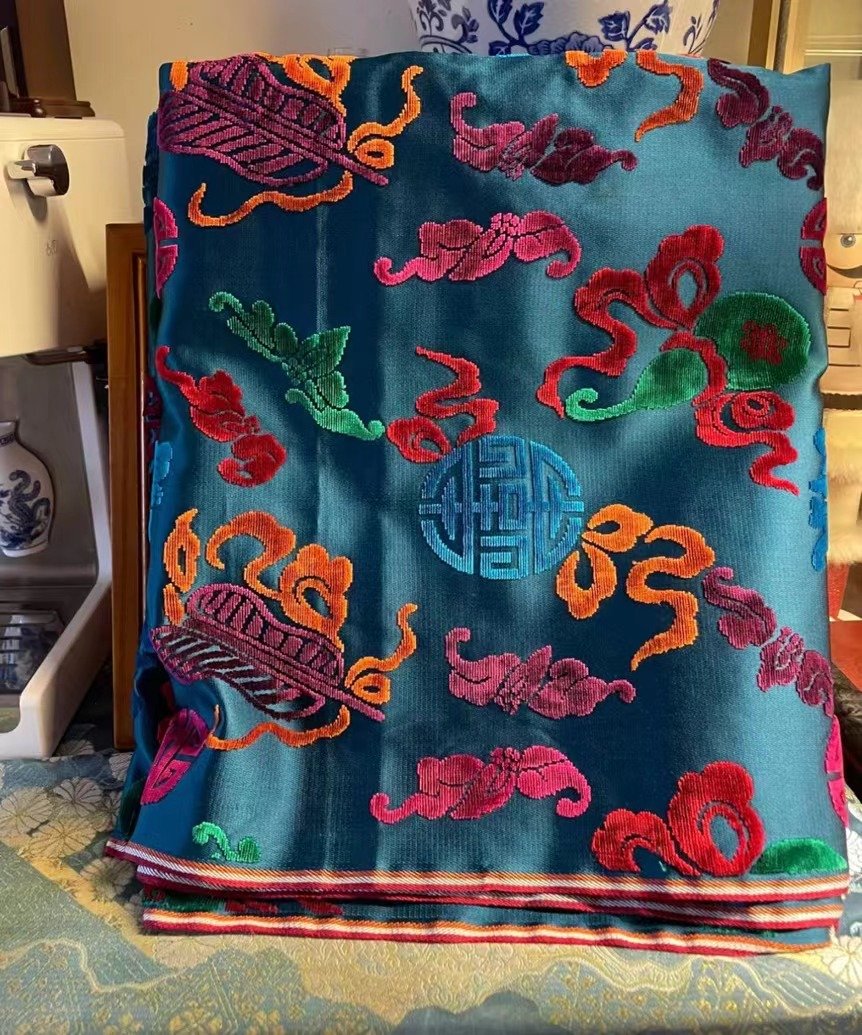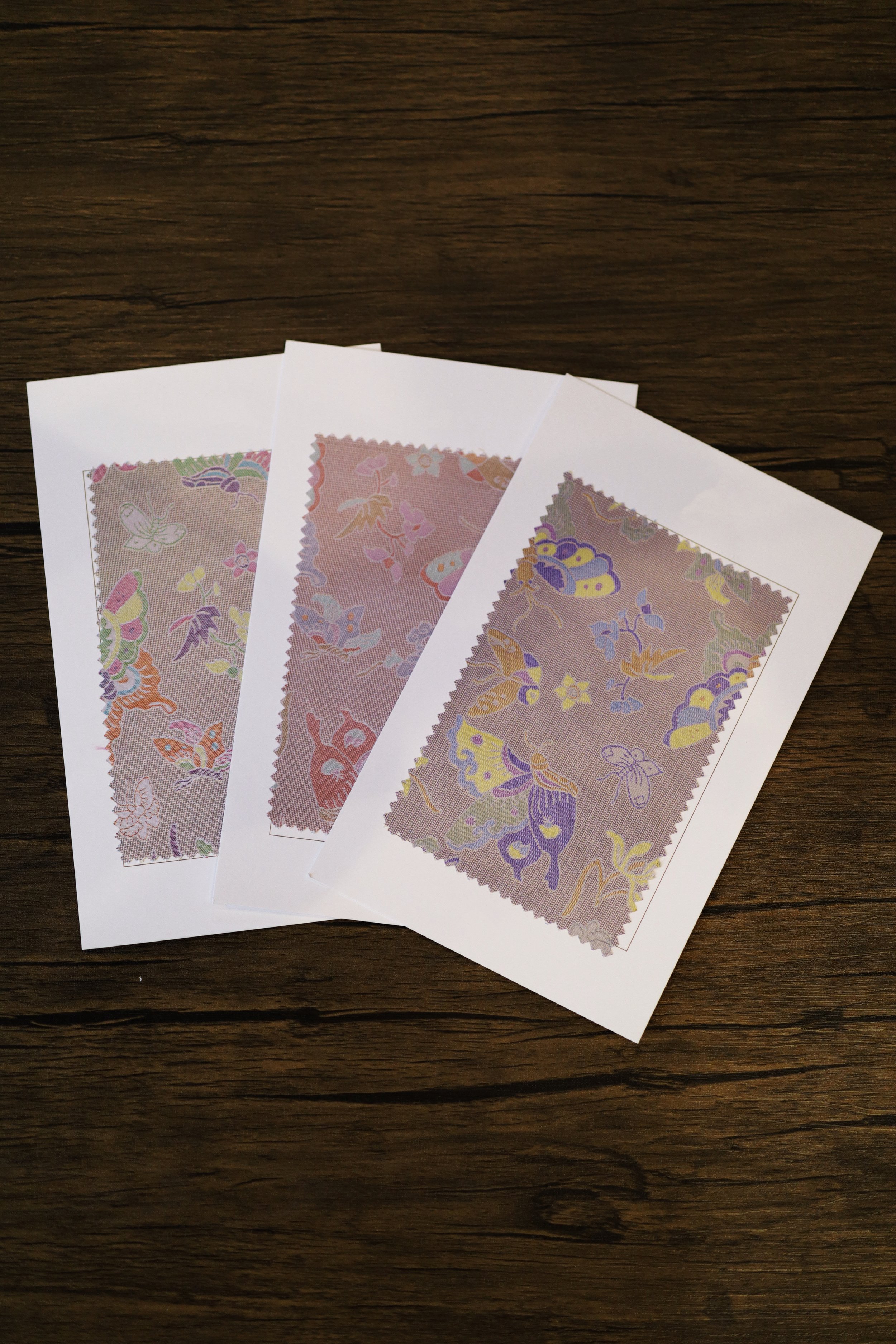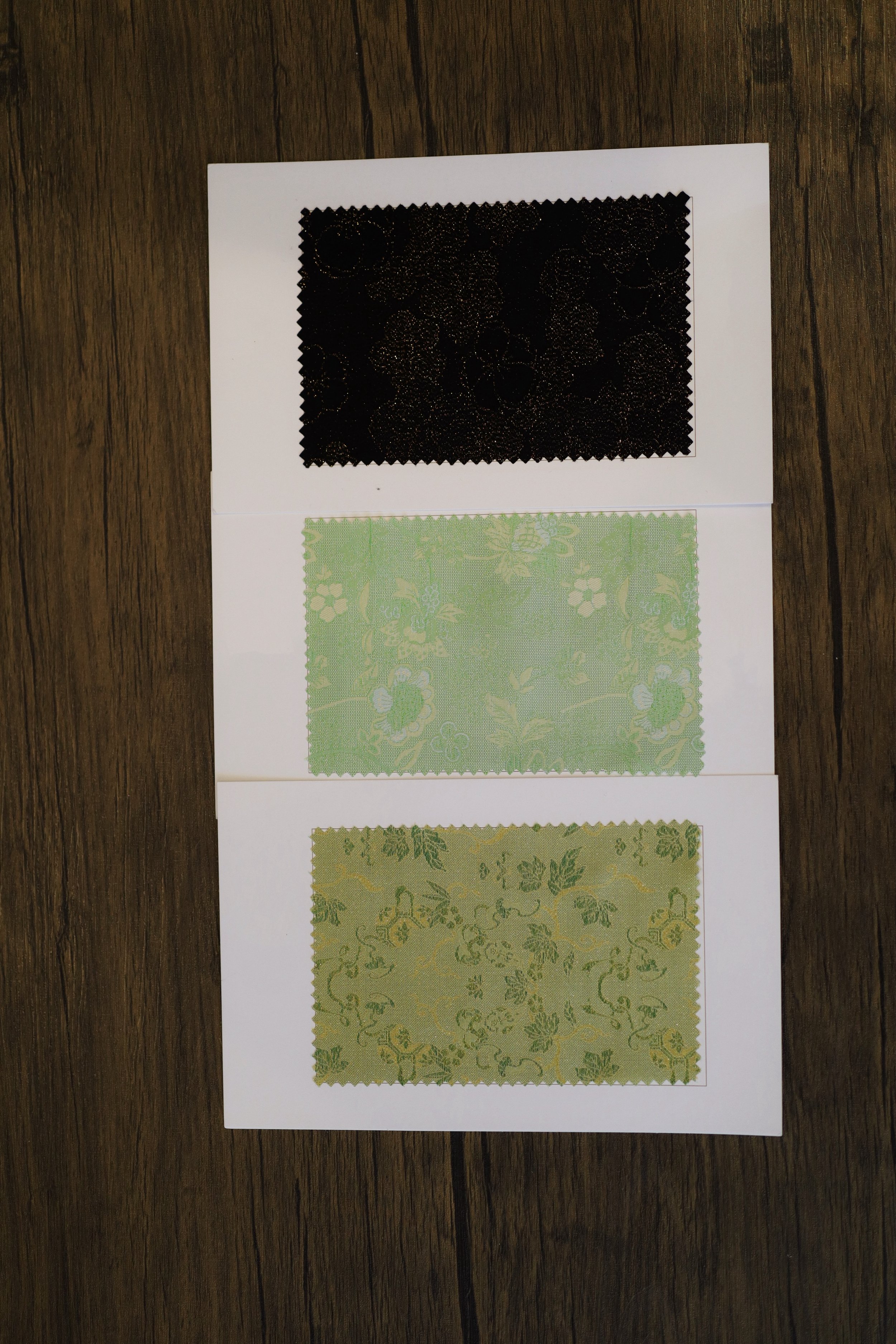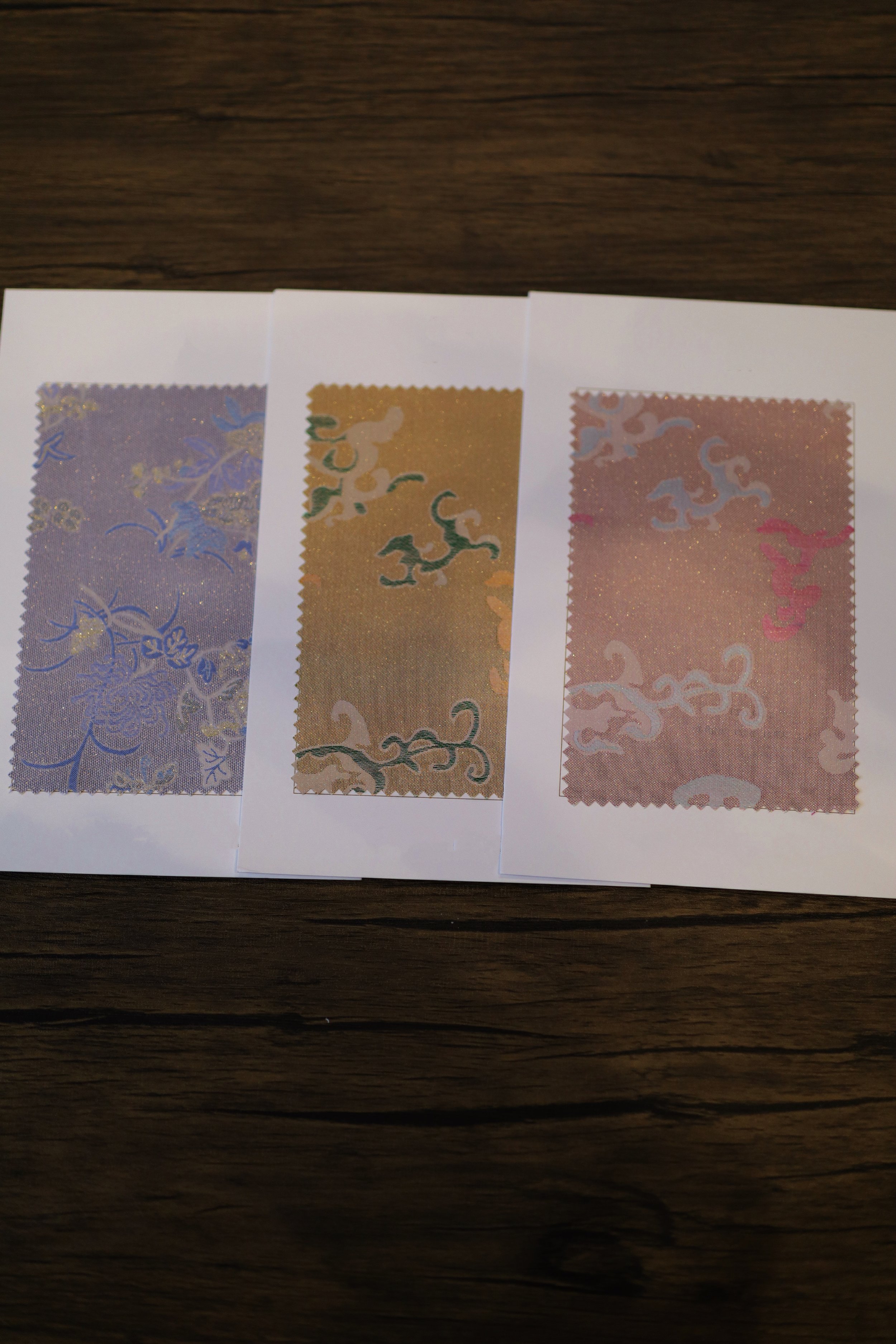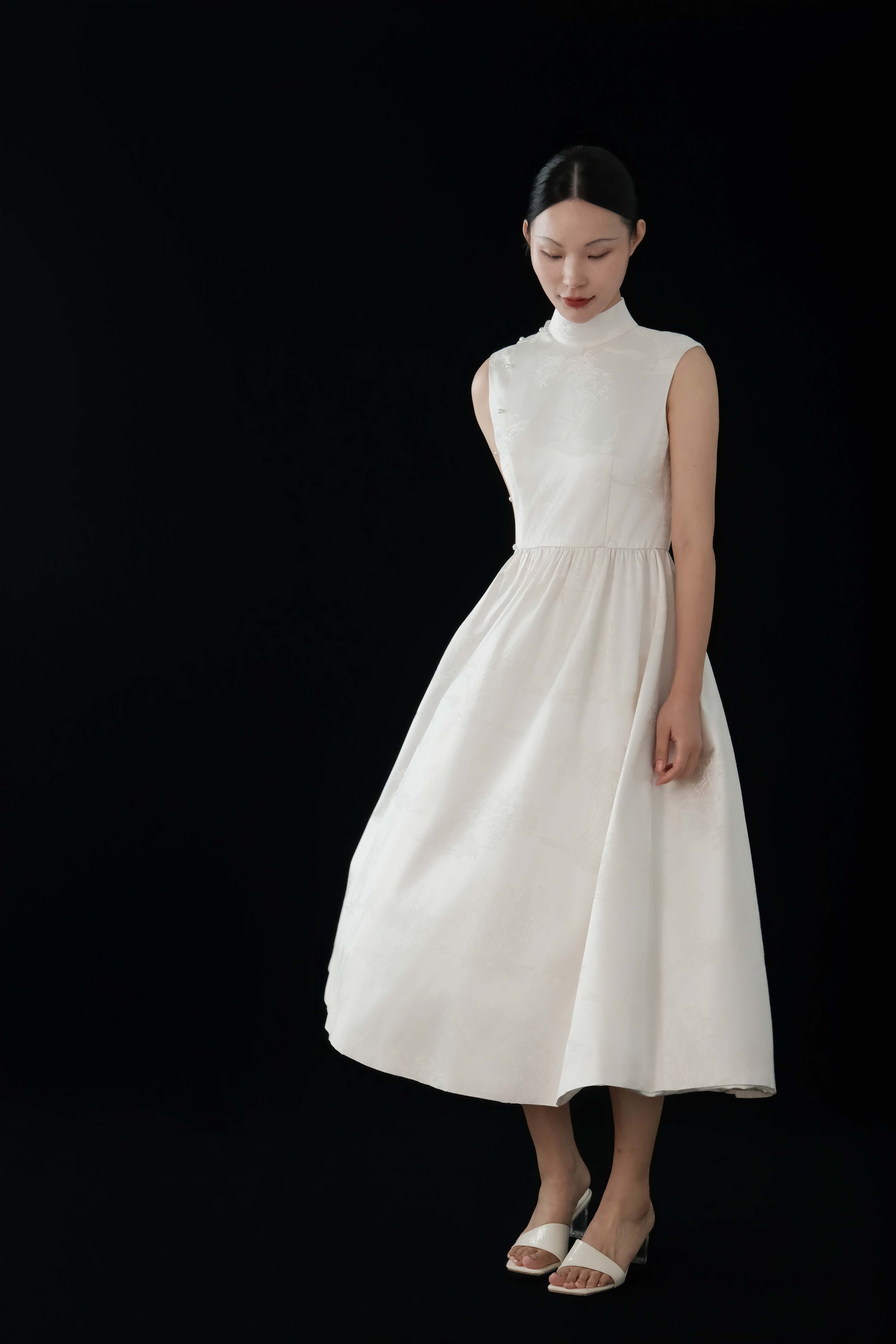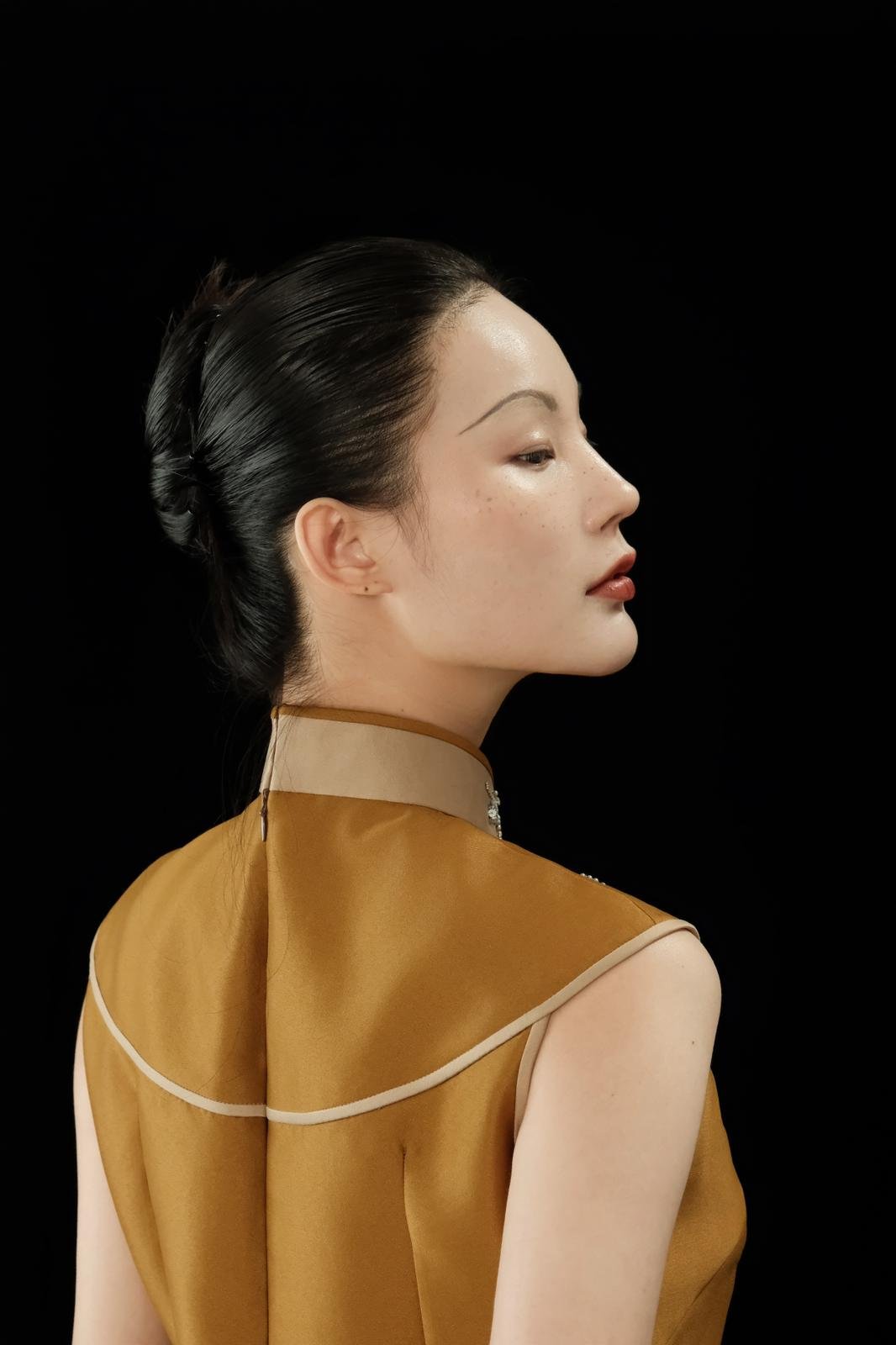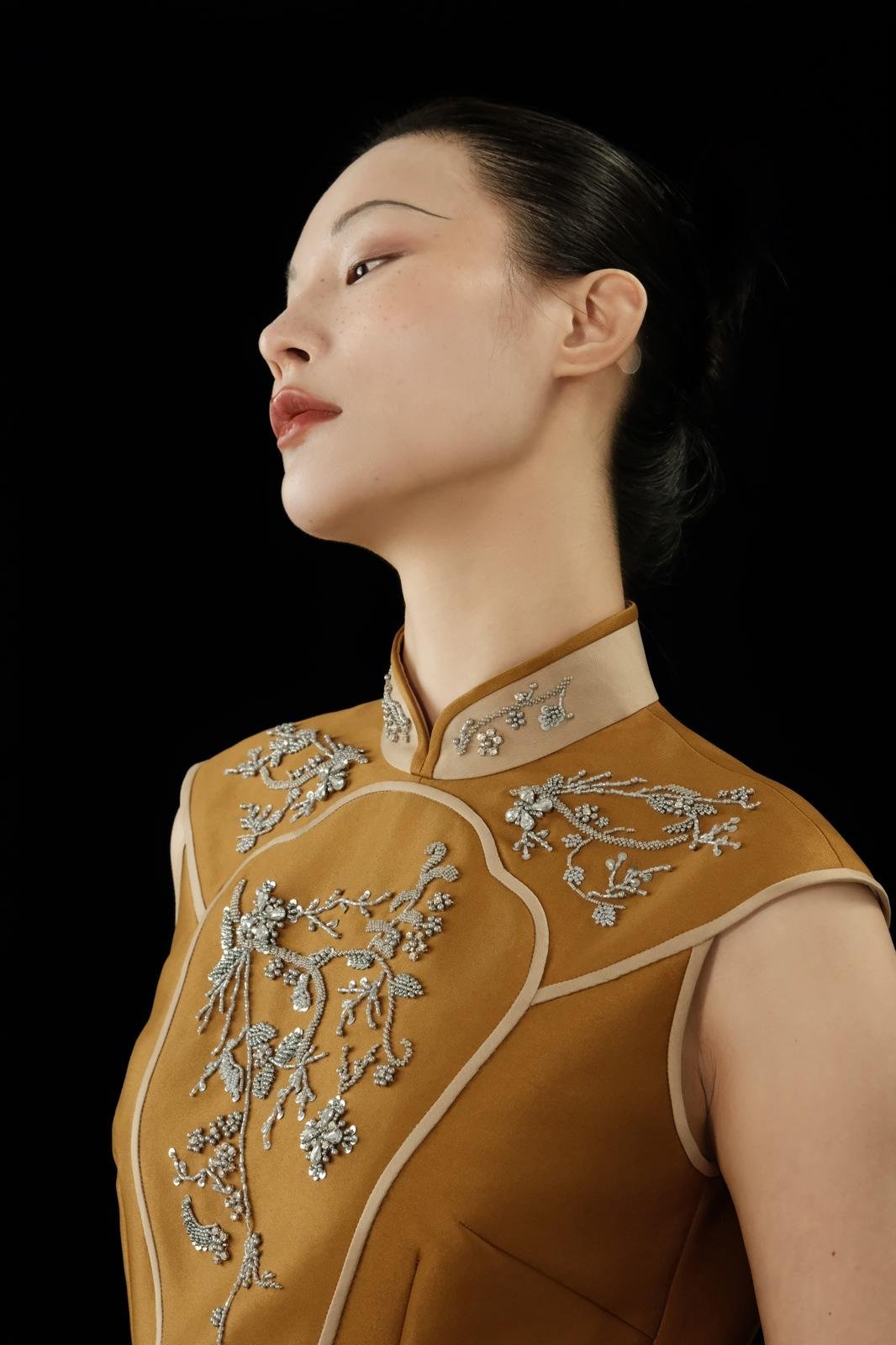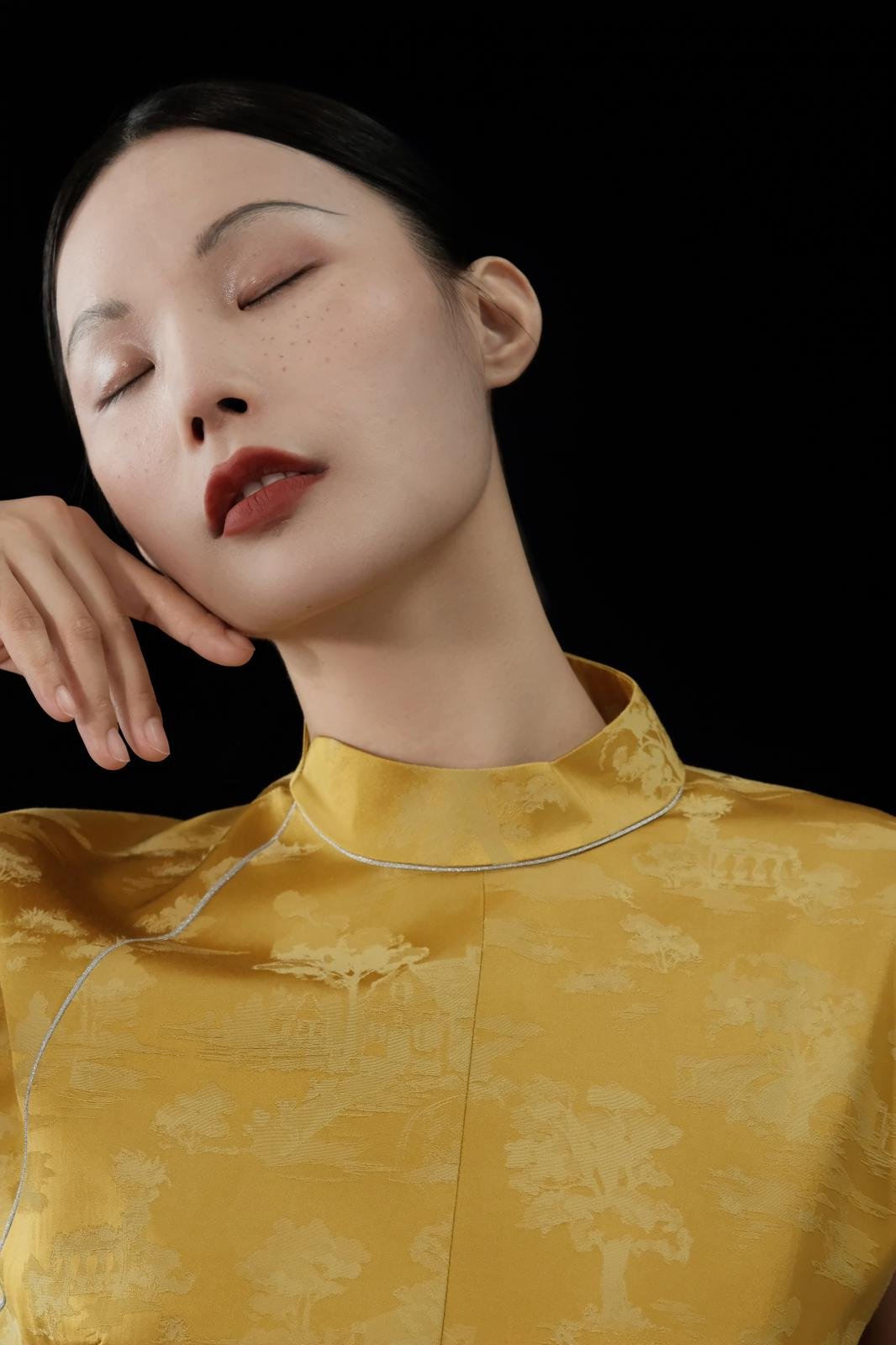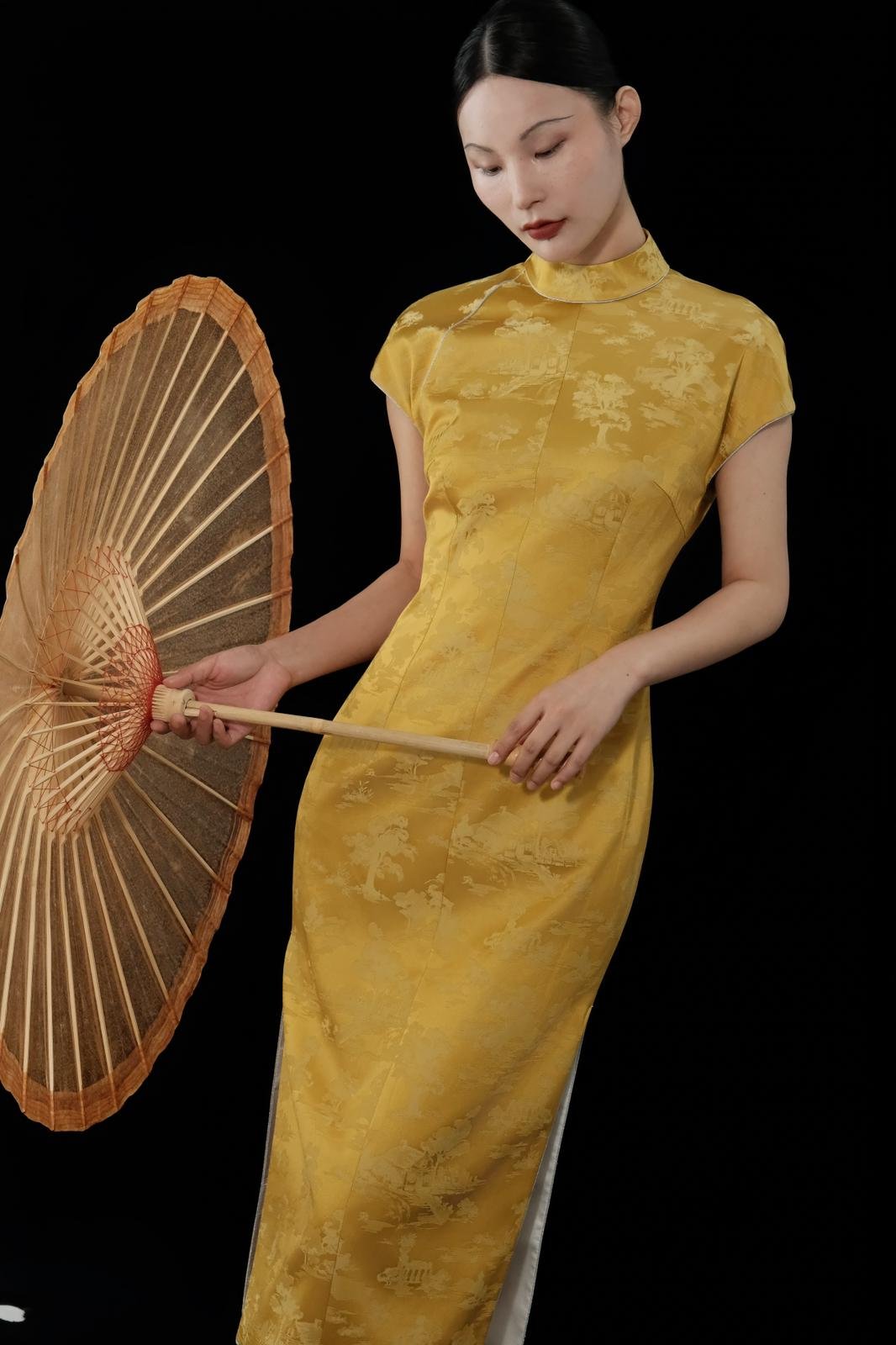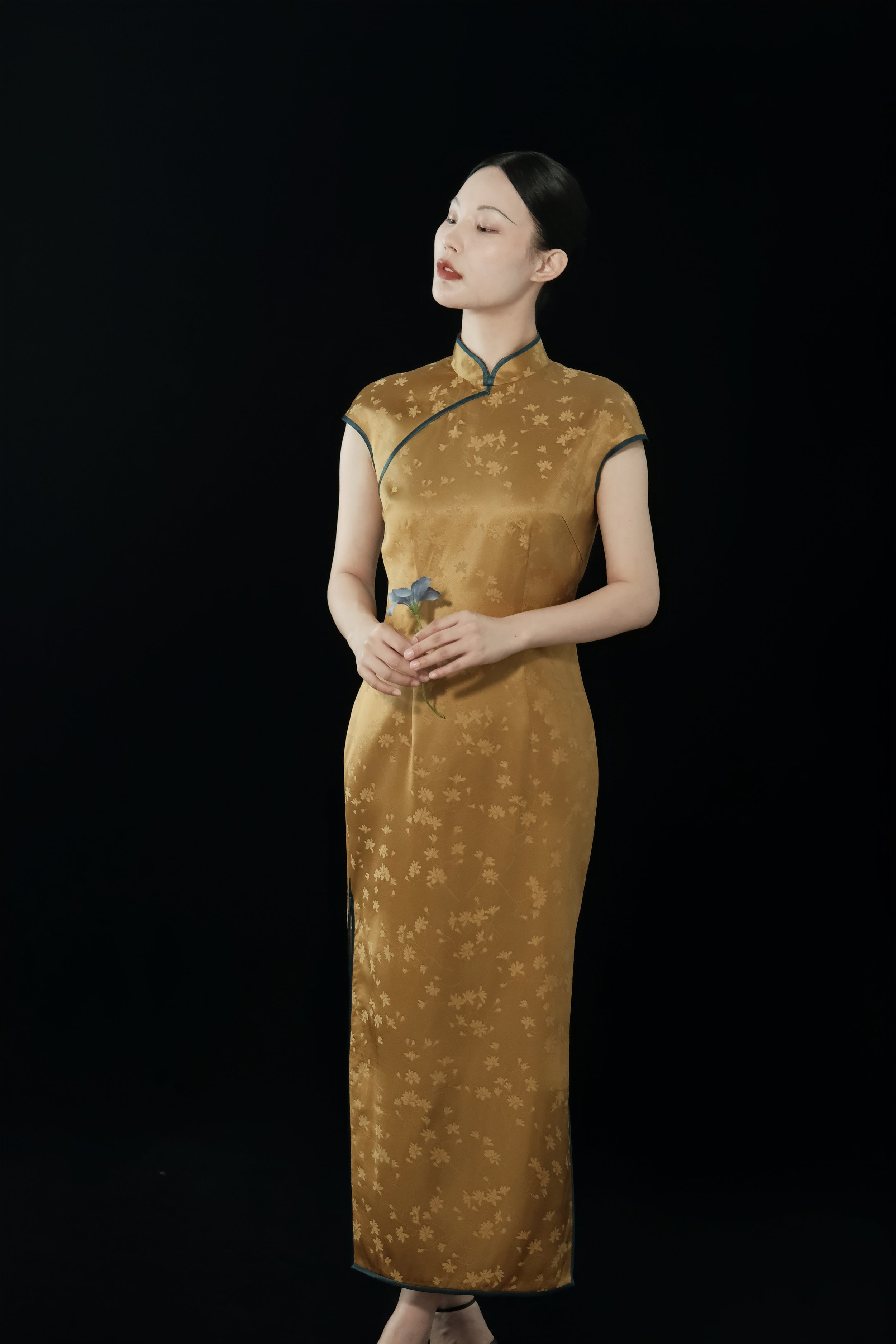
QIPAO MATERIAL SHOWCASE
National intangible cultural heritage
SHUJIN
蜀锦
LAODUAN
老缎
ZHANGDUAN
漳缎
ZHANG VELET
漳绒
SONGBROCADE
宋锦
SHU BROCADE—蜀锦
Shu brocade is a general term for the specialty brocade produced in Shu County (present-day Chengdu, Sichuan) from the Han Dynasty to the Three Kingdoms period. It is a jacquard fabric woven with processed silk dyed in the five traditional colors (red, yellow, green, blue, and black). Along with Suzhou Song brocade, Nanjing Yun brocade, and Guangxi Zhuang brocade, it is regarded as one of China’s four famous brocades. Shu brocade is a traditional craft of Sichuan Province.
蜀锦是汉至三国时蜀郡(四川成都一带)所产特色锦的通称,是用染成五方正色(红、黄、绿、蓝、黑)的熟丝织造出的提花织物,与苏州宋锦、南京云锦、广西壮锦并称为我围四大名锦,是四川省的传统技艺。面料趋势
LAODUAN—老缎
Old satin is a traditional silk fabric renowned for its smooth, delicate, and lustrous texture. It is woven using a complex satin weave, typically made from natural silk. Through fine craftsmanship, the surface of the fabric attains a unique smoothness. The structural characteristic of old satin lies in its warp threads being significantly more prominent than the weft, with the yarns loosely interwoven, resulting in an even sheen on the surface.
老缎是一种传统的丝织物,以其光滑、细腻、富有光泽的质感而闻名。它是采用复杂的缎纹组织编织而成的,通常使用的是天然丝,经过精细的工艺加工,使得表面呈现出独特的光滑感。老缎面料的结构特点在于经线明显多于纬线,纱线交织较为疏松,因此在织物表面呈现出均匀的光泽。面料趋势
ZHANGDUAN—漳缎
Zhang satin is a representative velvet fabric from ancient China, originating in Zhangzhou, Fujian during the late Ming and early Qing dynasties. It is woven using two sets of warp threads and four sets of weft threads, innovating upon the traditional plain velvet structure to become a highly artistic jacquard velvet fabric. This fabric is made entirely of pure silk with a satin weave base and a pile warp that forms patterns. The craftsmanship is exceptionally refined, and the jacquard velvet loom used for making Zhang satin was one of the most advanced types of flower looms in ancient China. It was known for its mechanical functionality, rational structure, and mature technology, and has been passed down through generations.Zhang satin comes in two types: plain and patterned. The surface of plain Zhang satin is entirely covered with loops, while in patterned Zhang satin, some loops are cut into pile following the pattern, creating a design where the cut pile contrasts with the uncut loops.
漳缎是中国古代绒类织物的代表作,始于明末清初福建漳州,由两组经线和四组纬线交织而成,在织物结构上创新了原有素绒织物,成为最具艺术特色的以缎纹为地、绒经起花结构的全真丝提花绒织物。在工艺技术上极为精湛,制作漳缎使用的提花绒织机,是中国古代花楼机中机械功能最为完善、机构最为合理、技术工艺最为成熟的一种,并一直传承。有花素两类。素漳绒表面全部为绒圈,而花漳绒则将部分绒圈按花纹割断成绒毛,使之与未割的绒圈相间构成花纹。ZHANG VELET—漳绒
Zhang velvet, which flourished during the Ming and Qing dynasties, comes in two varieties: patterned Zhang velvet and plain Zhang velvet. Patterned Zhang velvet refers to the technique where certain velvet loops are cut along the pattern to form pile, creating a design that contrasts with the uncut loops. In contrast, plain Zhang velvet has a surface entirely covered with loops.Zhang velvet typically uses silk as the raw material for the warp threads, with cotton yarn as the weft, and mulberry silk (or rayon) for the pile loops. During weaving, after every four pile threads, a pile rod (a thin iron wire) is inserted. Once the fabric reaches a certain length, a cutting blade is used along the iron wire to create the pile. The way the pile forms is based on the pattern design.There are two main types of patterns used in Zhang velvet: one where the velvet forms the pattern on a satin base, known as Zhang satin, and the other where the satin forms the pattern on a velvet base, known as Zhang velvet. A distinguishing feature of Zhang velvet is that it has little woven base, and it may come in single or dual colors, sometimes incorporating gold or silver threads.
漳绒,明清两代最为兴盛。有花漳绒和素漳绒二种。花漳绒是指将部分绒圈按花纹割断成绒毛,使之与未断的线圈联同构成纹样;而素漳绒则其表面全为绒圈。一般漳绒用蚕丝作原料或作经线,以棉纱作纬线,再以桑蚕丝(或人造丝)起绒圈。织造时,每织四根绒线便织入一根起绒杆(即细铁丝),织到一定长度时即在机上用割刀沿铁丝剖割,即成毛绒。毛绒如何起是依纹样设计。构成织物的纹样有两种形式:一是绒花缎地、即漳缎;一是绒地缎花,即漳绒。其特点是少有织地,有单、双色,或嵌金银线。SONG BROCADE—宋锦
Song brocade is one of China’s traditional silk handicrafts, and since its main production area is in Suzhou, it is also known as “Suzhou Song brocade.” Song brocade is characterized by its soft texture, bright colors, elegant patterns, and a rich sense of antiquity, reflecting strong national characteristics. Its unique structural design, complex craftsmanship, and artistic style are elegant and simple, embodying the characteristics of its era, earning it the title of “Crown of Brocades” in China. Along with Nanjing Yun brocade, Sichuan Shu brocade, and Guangxi Zhuang brocade, it is recognized as one of China’s “Four Famous Brocades.”
宋锦,中国传统的丝制工艺品之一,因其主要产地在苏州,故又称“苏州宋锦”。
宋锦质地柔软,色泽光亮,花型雅致,古意盎然,富有浓郁的民族特色。其组织结构独特,工艺复杂,艺术风格典雅古朴,富有时代特征,被誉为中国“锦绣之冠”。它与南京云锦、四川蜀锦、广西壮锦一起,被誉为我困的“四大名锦”。
